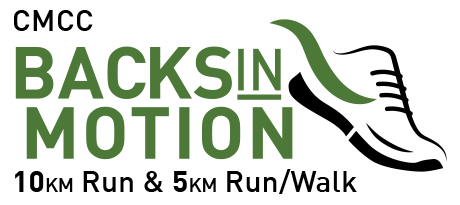I picked up a pair of Salomon SpeedCross 2’s midway this past winter (or what we had as an excuse for winter this year in Niagara). I was looking for a good shoe that would keep my feet warm and dry, with an outsole that would be conducive to running in our typical winter conditions – ice, slush, snow, gravel, salt, etc. These shoes appeared to fit the bill. This model used gore-tex (dry and warm) and had a unique, aggressive outsole which Salomon refers to as “M&S contragrip”. This was basically a soft grippy rubber, with identical shaped lugs from toe to heel (rotated for optimal grip in the forefoot).
I typically wear a neutral shoe, and I was a little concerned with the “pronation control” marking on the heel counter. They looked like a neutral shoe, and they felt good so I decided to try them anyway.
I took them for an initial run on the road (where I figured I would use them most often) and they were great. My main problem in winter is cold feet, and they were great at keeping the elements out, and the reduced breathability of the gore-tex worked in my favour! While these shoes were great when the roads were snowy, I knew that the soft rubber on the soles likely wouldn’t be as tolerant of bare asphalt which we had an inordinate amount of this winter. However, I soon found where these shoes really shone. Winter trails.
Last year I bought a pair of Yak-trax and used them for running on some of the snow and ice covered roads and trails in the area. After my first snow covered trail run in the SpeedCross 2’s, it was clear that they provided as much grip and control as I needed. I was amazed at how well these shoes bit into the snow, especially on downhills and corners. Over the course of this run on some technical trails, my confidence in these shoes quickly went to 100%.
The only area for improvement with these shoes is the salomon lacing system. I am all for this style of lace – I use a similar style of speedlace system on all of my running shoes, but I prefer a thicker, elasticized lace that stays tight without adjustment. I found with the laces that came on these shoes, I had to stop and tighten them a few times during each run when the laces adjusted and my heel felt loose. That being said, it is easy to replace the laces with something more personally suitable.
I ran about 100km in these shoes over the last weeks of the 2012 winter season, mainly on trails, and can’t say enough about them. Now that the warmer weather has arrived, I have tucked them away until the snow flies next year but I look forward to putting many more kilometres on them.
I picked up a pair of Salomon SpeedCross 2’s midway this past winter (or what we had as an excuse for winter this year in Niagara). I was looking for a good shoe that would keep my feet warm and dry, with an outsole that would be conducive to running in our typical winter conditions – ice, slush, snow, gravel, salt, etc. These shoes appeared to fit the bill. This model used gore-tex (dry and warm) and had a unique, aggressive outsole which Salomon refers to as “M&S contragrip”. This was basically a soft grippy rubber, with identical shaped lugs from toe to heel (rotated for optimal grip in the forefoot).
I typically wear a neutral shoe, and I was a little concerned with the “pronation control” marking on the heel counter. They looked like a neutral shoe, and they felt good so I decided to try them anyway.
I took them for an initial run on the road (where I figured I would use them most often) and they were great. My main problem in winter is cold feet, and they were great at keeping the elements out, and the reduced breathability of the gore-tex worked in my favour! While these shoes were great when the roads were snowy, I knew that the soft rubber on the soles likely wouldn’t be as tolerant of bare asphalt which we had an inordinate amount of this winter. However, I soon found where these shoes really shone. Winter trails.
Last year I bought a pair of Yak-trax and used them for running on some of the snow and ice covered roads and trails in the area. After my first snow covered trail run in the SpeedCross 2’s, it was clear that they provided as much grip and control as I needed. I was amazed at how well these shoes bit into the snow, especially on downhills and corners. Over the course of this run on some technical trails, my confidence in these shoes quickly went to 100%.
The only area for improvement with these shoes is the salomon lacing system. I am all for this style of lace – I use a similar style of speedlace system on all of my running shoes, but I prefer a thicker, elasticized lace that stays tight without adjustment. I found with the laces that came on these shoes, I had to stop and tighten them a few times during each run when the laces adjusted and my heel felt loose. That being said, it is easy to replace the laces with something more personally suitable.
I ran about 100km in these shoes over the last weeks of the 2012 winter season, mainly on trails, and can’t say enough about them. Now that the warmer weather has arrived, I have tucked them away until the snow flies next year but I look forward to putting many more kilometres on them.
From my blog:
http://runbikerace.wordpress.com/2012/04/19/salomon-speedcross-2-shoe-2/





















